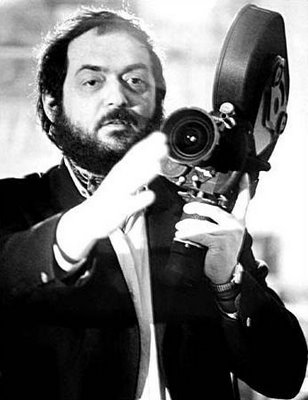A familiar challenge is to translate the seemingly unyielding demand to put a specific technology into something because it is expected, or because the name of the technology is the new great thing. It doesn’t matter what it is in particular — I use “doorknob” as a stand-in for whatever the latest “doorknob” of the day might be.
For example — we’re going through an Augmented Reality “doorknob” phase presently, as most of you know. As evidenced by the recent issue of “The Skateboard Mag (78)”, we’re also continuing to go through another, another 3D “doorknob” phase. Which is fine, I guess. 3D is fun when the impact is light, like a magazine.
What do I mean by doorknob? Doorknobs are things that rarely mean anything at all to normal human beings but they mean everything in the world to doorknob enthusiasts who spend most of their time trying to put doorknobs onto everything they possibly can — coffee tables, lampposts, patio chaises, kid’s t-shirts, wrist watches, fancy cameras, car dashboards, toasters, clock radios, keychains, tea kettles, baseball hats.. I could go on, but I’ll let the “doorknob” enthusiasts go crazy themselves.
Rarely, on occasion — someone puts a doorknob on a door because, perhaps, they lead their thinking and ideas and making with principles that focus on people and their practices before they just think of shoving doorknobs on kitten collars or broom handles.
Rather than specifying design first based on technology and engineering-based *parts, fashion small, short stories around the people-based principles that might, in the end, specify that a doorknob be used. But, only at the tail end of things. If you start to feel like you’re bolting doorknobs onto stuff cause some guy in a yellow tie and blue shirt had a graph that suggests that competition is going to start using Baroque, mother-of-pearl encrusted doorknobs on their 2013 saw horses — then obviously something is backwards with the design process. Increasingly — or maybe at this point completely — my own opinion is that, for the near future at least, design can play a much larger role in fashioning and specifying and coordinating the activities between all the other participants in the making of things. Amongst engineering, marketing, operations, production, sourcing and so on. Not that all that is fun at all — but it may be crucial and necessary for creating a legible, sensible “output” at the end of a lot of hard work. Something that communicates and represents value in a people-centered way. It’s incredible how much kruft comes out at the end of markets-led decisions — it’s simply unsustainable, and often done just to keep a foot in the door and so that conversations (good or bad) continue to float around.
Alternatively is the translation of the *doorknob into something else. Doorknobs can be props that stand in for something else that is more people and experience-centric — say, access. A way in. Even an ornamental way in that suggests something wonderful lies beyond. Translating that experience could make a doorknob more than an inappropriate proboscis on something it has no business being part of, I suppose. That feels like a middle ground compromise, as opposed to starting with experiences that are legible to whomever you are hoping to make something for — making those experiences the best they can be (or even just a little better than they already are.)
*shrug*
Okay. Back to it, then.
Why do I blog this? Honestly, don’t read much into this or try to interpret what might *really be going on. I’m just capturing some caffeine-fueled notes on a thorough-going set of questions about how to effectively lead “innovation” or the making of things with design principles and design practices that then themselves specify “the parts.” How can design lead with the respect and authority that engineering and business and marketing-type activities have already? And do so without the hubris of “John H. Doe Design Agency” sort of stuff. If engineering and “research” start with, say — doorknobs that operate without touching them and business and marketing start by assessing what sort of doorknob ornamentation will the market expect down the road what is the way for design to contribute a perspective and translates that language in such a way that, perhaps — doorknobs themselves are questioned and new propositions appear that aren’t specifications based on what is available, but specifications based on what should be, that based on principles more thoroughly considered than “just ’cause.”
Continue reading When Not To Use Doorknobs



